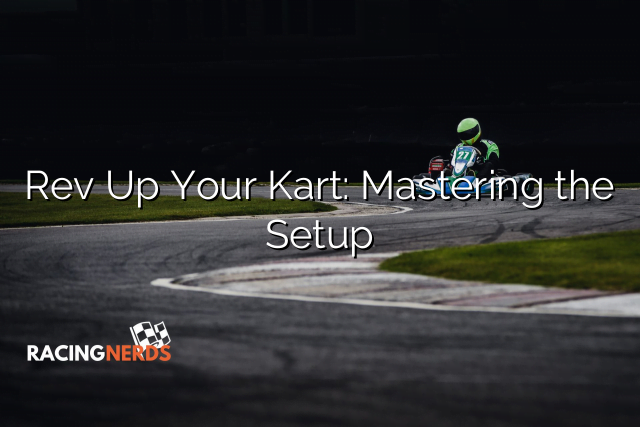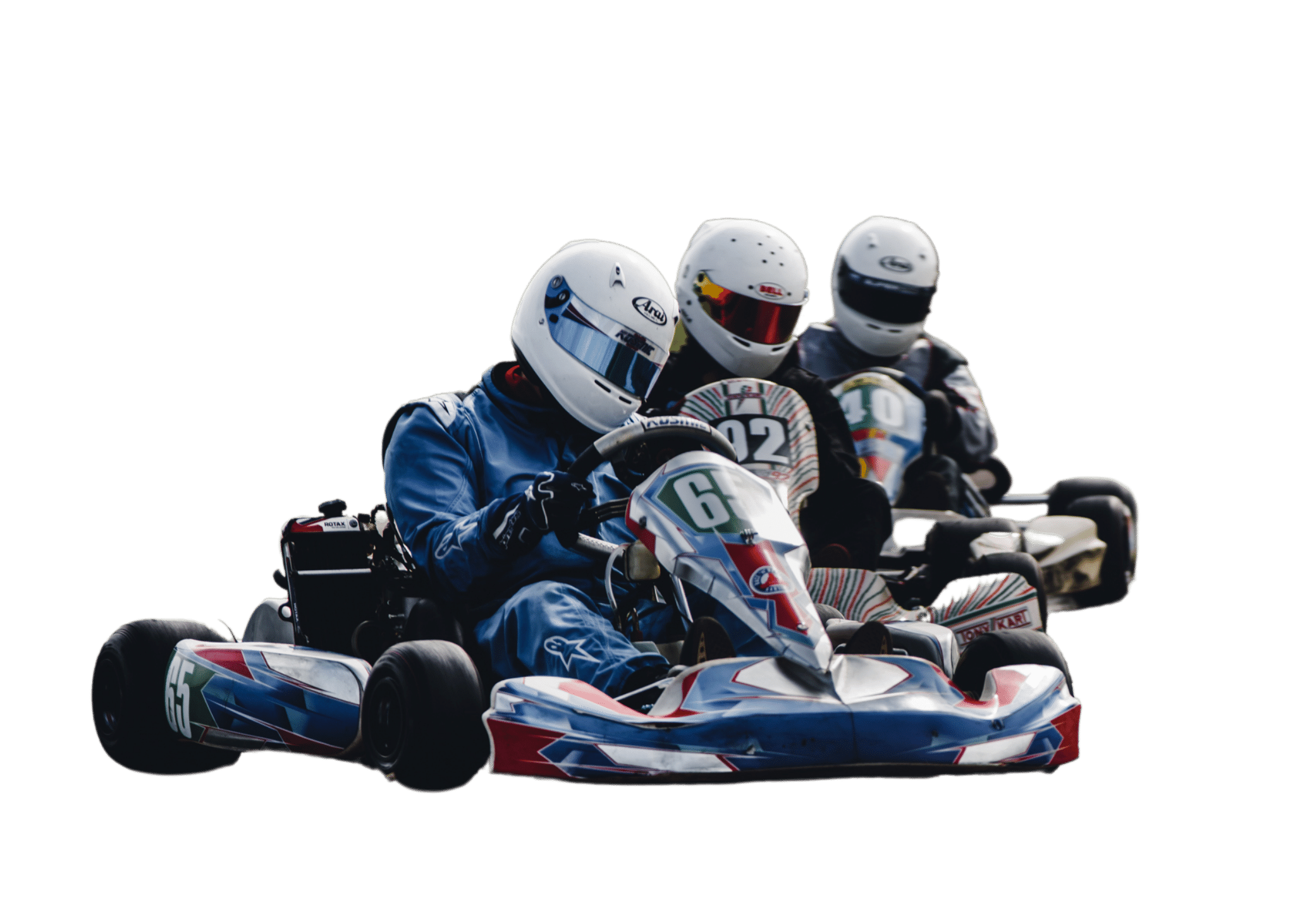
In the competitive realm of kart racing, the difference between standing atop the podium or blending in with the pack often hinges on the nuanced art of kart setup. A meticulously calibrated machine can carve corners with precision, accelerate with authority, and maintain stability at the edge of performance, where races are won and lost.
To navigate the intricate balance of chassis dynamics, one must consider the multifaceted relationship between track width, ride height, and torsion bar tuning, each adjustment serving as a cog in the complex machinery of handling and speed.
As we explore the subtleties of axle selection, front-end geometry, and the strategic application of gear ratios, we invite you to join us in an exploration of the principles and practices that define the zenith of kart optimization.
The ensuing discussion will not only illuminate the technicalities but also empower enthusiasts and seasoned racers alike to elevate their craft and harness the full potential of their machines in pursuit of racing excellence.
Understanding the dynamics of a kart’s chassis is crucial, as it frequently serves as the foundation for achieving optimal handling and performance on the track. Precise kart weight distribution is paramount, as it impacts the vehicle’s balance and its ability to navigate corners with agility.
A well-balanced chassis ensures that the weight is evenly distributed across the tires, which is essential for maintaining traction and preventing excessive wear. Adjustments to the chassis can significantly influence handling and stability, creating a responsive or stable kart depending on the track conditions and driving style.
Analyzing the interplay between the chassis setup and the kart’s behavior in various racing scenarios enables drivers to fine-tune their machines for peak performance, cementing the chassis as the linchpin in the quest for competitive supremacy.
Adjusting the track width of a kart is a key factor in fine-tuning the vehicle’s balance and grip. It directly influences its cornering capabilities and stability on the racetrack.
Track width adjustments hold a pivotal role in maximizing grip, which is essential for achieving optimal lap times. A wider front track can improve front-end grip, enhancing turn-in response and reducing understeer.
Conversely, narrowing the front track can decrease front-end grip, potentially increasing oversteer tendencies. At the rear, a wider track generally increases stability, particularly in high-speed corners, but can also lead to a less responsive rear end.
Careful analysis of track conditions and driving style is crucial when optimizing track width. These factors will dictate the precise adjustments needed for peak performance.
While optimizing track width is integral to cornering performance, setting the correct ride height is equally crucial in fine-tuning a kart’s handling and weight distribution.
Ride height tuning not only impacts the kart’s aerodynamic profile but also its center of gravity—critical for maintaining stability through the twists and turns of a race.
A lower ride height can increase grip by reducing the center of gravity, but too low can cause bottoming out on uneven surfaces. Conversely, a higher setting may benefit rough tracks, lending extra clearance.
Weight distribution optimization is achieved by careful adjustments to the ride height, ensuring that tire contact is maximized and chassis balance is ideal.
This meticulous attention to ride height can be the difference between a podium finish and an also-ran performance.
Torsion bar tuning plays a pivotal role in altering the chassis stiffness, thereby directly influencing the kart’s handling characteristics under various track conditions. Understanding the principles of torsion bar stiffness and how torsion bar adjustments affect performance is essential for any serious karter.
Having examined how torsion bar tuning influences chassis stiffness and handling, it’s equally important to consider the role of axle selection in optimizing kart stability and braking performance.
The strategic choice of an axle is a pivotal aspect of kart setup, where both axle stiffness comparison and axle length considerations come into play. A stiffer axle generally enhances cornering stability but can lead to reduced grip in low-traction conditions. Conversely, a more flexible axle can provide greater grip, yet may sacrifice stability and responsiveness.
Additionally, axle length adjustments can fine-tune the kart’s balance, influencing weight distribution and the overall handling characteristics. A well-considered axle strategy, therefore, is crucial for achieving the delicate balance between aggressive cornering and dependable braking.
Selecting the appropriate tires for a kart is a critical decision that directly influences grip levels and overall performance on the track. Tire compound selection and tire maintenance techniques are integral to achieving the best results.
An analysis of these elements reveals the following key considerations:
Incorporating a strategic approach to tire choice and maintenance can yield significant competitive advantages on the track.
Optimizing tire pressure is a pivotal aspect of kart setup that directly impacts traction and handling performance on the track. Precise tire pressure maintenance ensures the contact patch between tire and asphalt is maximized, allowing for superior grip and responsiveness during races. A well-monitored tire pressure can also prevent premature wear and possible failures, which are critical for both safety and competitive edge.
In tire pressure monitoring, drivers and technicians must account for variables such as ambient temperature, track condition, and driving style. The analytical approach to managing tire pressure involves continual adjustments, often made between sessions, to adapt to the dynamic racing environment. This careful balancing act can often be the difference between podium finishes and mid-field anonymity, highlighting its importance in the realm of kart racing.
Tire graining, a phenomenon characterized by the accumulation of small rubber particles on the tread, can significantly compromise the performance and longevity of karting tires. An intricate understanding of this occurrence is pivotal for optimal tire maintenance and effective racing strategies. Graining typically arises when tires are subjected to excessive slip or are not operating within their ideal temperature range, leading to a loss of traction and an uneven wear pattern.
To delve deeper:
An informed, analytical approach to these factors is essential for maintaining tire integrity and achieving peak kart performance.
Adjusting the caster angle is crucial in fine-tuning a kart’s steering characteristics and front-end grip, as it directly influences the wheel’s ability to align with the direction of travel during cornering. The caster angle benefits include improved stability at high speeds and a more responsive steering feel. Caster angle adjustment techniques involve tilting the kingpin—the pivot point of the steering mechanism—forward or backward.
| Caster Angle Increase | Caster Angle Decrease |
|---|---|
| Enhanced straight-line stability | Quicker steering response |
| Greater dynamic camber effect | Less load on front tires |
| More self-centering steering | Reduced caster-induced jacking effect |
Proficient caster calibration is an analytical exercise, requiring attention to the kart’s behavior under different track conditions. Engaging in methodical adjustments and testing can yield a setup that enhances both performance and driver confidence.
The nuanced approach to camber settings can significantly influence a kart’s cornering performance and tire contact with the track. Camber angle adjustments are integral for achieving optimal grip levels and ensuring even tire wear, which contribute to consistent lap times and improved handling. Proper tire temperature management is also crucial, as it can be directly affected by camber settings.
Optimizing toe settings is a critical step in refining a kart’s steering response and overall handling dynamics. Proper toe configuration influences not only the precision of the kart’s turn-in but also directly impacts tire wear and tire temperature management.
A toe-in setup can offer stability, particularly in the straights, by creating a slight convergence of the wheels, which can be beneficial in high-speed scenarios. Conversely, a toe-out alignment may enhance corner entry responsiveness, giving the driver an edge in tight, technical sections of the track.
Understanding the toe alignment benefits allows for strategic adjustments that can optimize contact patch efficiency and improve lap times. Thoughtful management of toe settings ensures that tire temperatures remain within optimal ranges, preventing premature degradation and maintaining consistent grip throughout a race.
While toe configuration aids in the nuanced control of handling, selecting the appropriate gear ratio is equally crucial for maximizing a kart’s acceleration and top speed on varying track layouts. Gear ratio decisions are a pivotal element of kart setup, representing a balance between gearing for speed and gear ratio for acceleration.
To optimize performance, one must consider:
Analyzing these facets leads to informed gear ratio decisions, enhancing both race strategy and kart responsiveness.
Weather conditions significantly influence kart setup. For wet conditions, increase tire pressure and chassis flex to enhance grip. Conversely, in dry conditions, lower tire pressure and reduce chassis flex for optimal handling and speed.
To guarantee your kart’s longevity, meticulous maintenance is key. Regularly monitor tire pressure for optimal grip and adjust gear ratios to suit track conditions, ensuring your machine remains a formidable contender on the circuit.
Driver balance and weight distribution are critical in kart setup. Adjustments like seat positioning and ballast addition can optimize performance for varying driver sizes, ensuring balanced handling and competitive lap times.
Seat placement in a kart is pivotal for balance and performance. Proper positioning optimizes the center of gravity, enabling precise handling tweaks and enhancing cornering stability and weight distribution throughout the vehicle.
To complement a well-tuned kart, drivers should employ advanced techniques such as trail braking for precision cornering and counter steering to maintain control, both of which can significantly boost track performance.
In conclusion, the art of kart setup is a meticulous process involving an understanding of chassis dynamics, fine-tuning of track width, ride height, and torsion bars, as well as precise adjustments in front-end geometry and gear ratios.
For instance, a team adjusting the caster angle for improved corner exit speed exemplifies the strategic modifications that can lead to significant performance gains.
Mastering these elements is essential for racers seeking to optimize their karts for a competitive advantage on the track.

